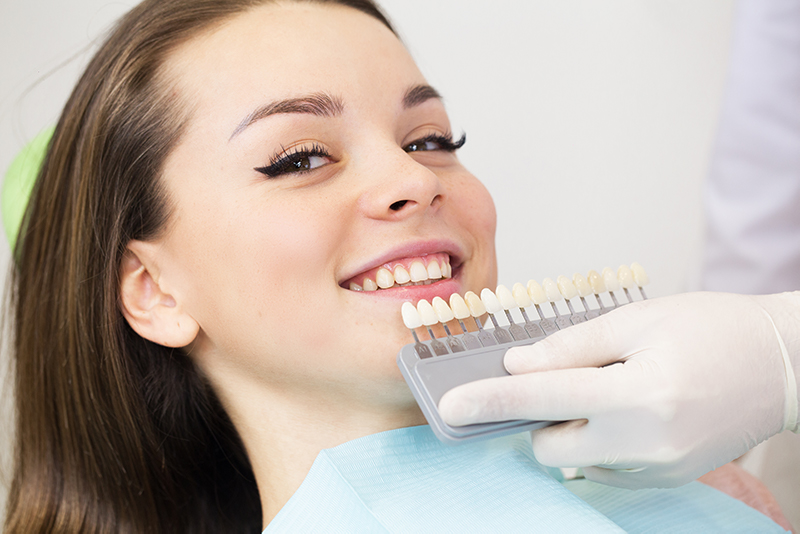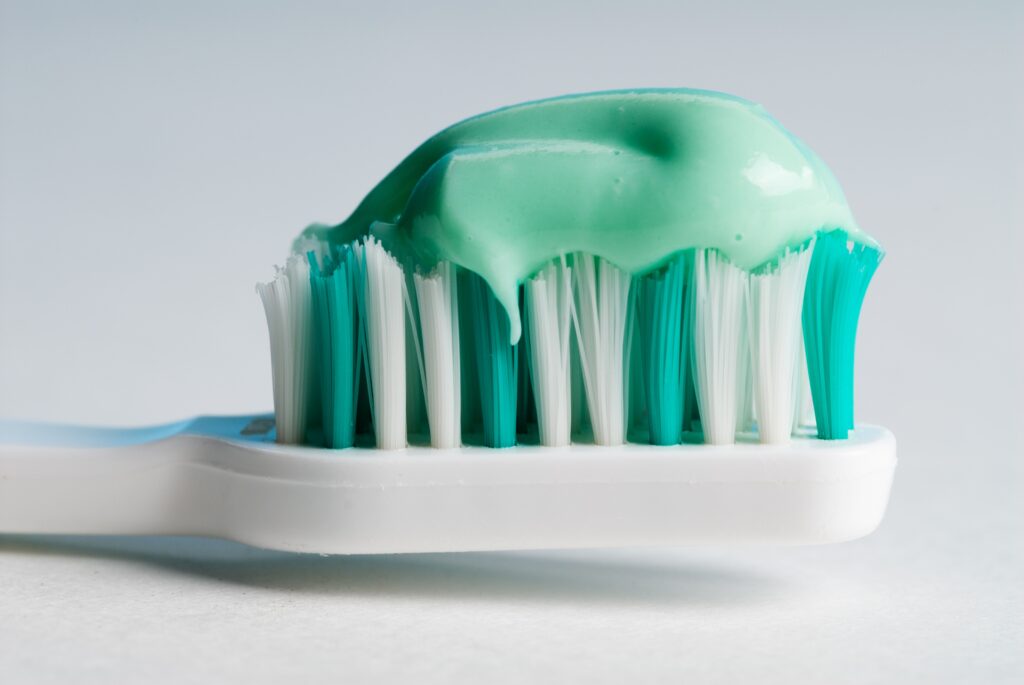Despite its booming popularity, cosmetic dentistry is often surrounded by questions and uncertainty. Some people associate it with fake smiles and Hollywood dentists, while some find out that fixing their chipped tooth might actually fit under the cosmetic category for their dental plan. Keep reading to find out what cosmetic dentistry is, and how to know if dental insurance will cover it
What Is Cosmetic Dentistry?
The generally accepted definition for cosmetic dentistry is the use of dental treatments and procedures to improve the appearance of the teeth and mouth.
This simply means that cosmetic dentistry typically deals with personal preferences, not health issues. However, some dental procedures may fix an existing health issue as well as correct the appearance. Procedures like this can help correct alignment, color, arrangement or shape.
Which Procedures Are Considered Cosmetic?
Teeth Whitening/Bleaching
Teeth whitening is performed when the patient wants a brighter and whiter smile. This procedure can be performed to reduce staining and discoloration or simply improve the teeth based on their personal preferences. Numerous options for teeth whitening go from in-office bleaching from your dentist to other less expensive options like whitening trays, gels, strips and toothpastes. This is entirely cosmetic dental work.
Bonding
Bonding uses a composite resin material to repair broken or chipped teeth and even build up the edges of crooked teeth to make them look straighter. Dentists often use a similar material to fill cavities, and because it is more visually appealing than the longer-lasting metal amalgam, many insurance companies will not cover as much of the cost. It is almost invisible, so if you need to repair a scratch or chip, it blends in with your other teeth. This is often used for non-cosmetic procedures too.
Onlays/Inlays
Onlays and inlays are suggested when there is structural damage to a tooth. An onlay or inlay is a cross between a crown and filling. It fulfills the purpose of a filling, to prevent future decay and cavities, and fits over the tooth like a crown (though it doesn’t completely cover the tooth). Onlays and inlays are more structurally secure than regular fillings and are used when someone has a cavity so large that it would endanger the tooth structure to use a softer substance like metal amalgam or resin composite. They are made of porcelain in a laboratory exactly pertaining to the specific damage on the tooth rather than being created directly against the tooth. After receiving them from the laboratory, the dentist bonds them to the damaged area. Unless it is made out of gold instead of porcelain, the onlay or inlay is invisible and appears no different from the rest of the teeth. This could occasionally be considered cosmetic.
Veneers
Veneers are thin shells bonded to the front surface of the teeth in order to change the appearance and make it more pleasing. These can be made of porcelain or composite resin materials depending on preference. Veneers can cover teeth that are discolored, worn down, chipped or broken, uneven or misaligned, have gaps, or are irregularly shaped. One major advantage of getting veneers is that they usually have a natural tooth appearance. These are very rarely considered a necessary procedure for the health of the patient.
Tooth Implants
Implants are titanium replacement tooth roots that are screwed into the jawbone to support a false tooth. Their main purpose is to replace missing teeth and prevent jawbone deterioration. In addition to providing a more stable false tooth than bridges or dentures, dental implants also function to trick the jawbone into believing that the tooth is still there, preventing future bone loss in the jaw. Due to increasing success rates, implants are beginning to replace bridges and partial dentures when dealing with tooth loss. Despite the proven health benefits, some insurance plans still consider it a luxury and may not cover much of the procedure.
Tooth Caps
Caps, also known as crowns, may be necessary when the exposed part of the tooth is damaged but the roots are structurally sound. Many things can cause damage to the surface of the tooth, such as grinding, aging, an improper bite, old fillings or tooth decay. Adding a cap on top of the damaged tooth can help provide the durability and strength that was otherwise missing and give it a seamless, healthy appearance. Crowns are sometimes considered cosmetic if you use them simply to cover up an unshapely tooth and make it look nicer, but they are usually not considered cosmetic if the tooth is falling apart or they need to cover the open space left by a root canal procedure.
Orthodontics (Correcting Misaligned or Crooked Teeth)
Orthodontics generally refers to the use of braces in order to improve the bite or create a more attractive smile by slowly straightening the teeth. There are several types of braces, including metal braces, “invisible” braces, lingual braces, self-ligating brackets and ceramic brackets.
Metal braces are the most common and usually take from 1-4 years to finish treatment. Metal brackets are bonded to the teeth with an arch wire threaded through them and rubber bands holding the wire in place. Invisible braces are a new system that allows teeth to straighten without the unappealing look of metal on your teeth, but it cannot be used for major changes. No matter the type, when braces are removed a retainer is typically used to help the teeth set permanently and not move out of place. Braces are a great way to straighten teeth and get the smile you always wanted, but they’re not always cosmetic. Crooked teeth can sometimes interfere with a person’s bite and cause serious dental problems if not treated.
Tooth Contouring/Reshaping
Contouring/reshaping is a quick treatment that can help correct mild cases of crooked, cracked, chipped or overlapping teeth. This procedure can sometimes have the same effect as braces simply by trimming a few millimeters off of the tooth and, in some cases, replacing it with tooth-colored laminate. This can also help get rid of minor defects on your teeth to improve the appearance of your smile based on your preferences. One great advantage about this procedure is that it is painless and instantaneous. It can be completed in one appointment with a dentist without any anesthesia. This is a cosmetic procedure in most cases and can only be used if the problem to be corrected is minor.
Are These Procedures Expensive?
Cosmetic dental procedures can be very costly but have also become more widely available in the past few years. Increasingly high demand and advances in treatment processes have both contributed to the rise in popularity. Cost for these procedures varies as much as the procedures themselves. Many people look for insurance or discount dental plans to help lighten those prices. This often proves difficult, since many insurance options do not cover cosmetic procedures. Discount dental plans, on the other hand, usually provide some discount on cosmetic procedures. Regardless of which route you take, an insurance or dental plan can definitely help take some of the pressure off the possibly expensive prices.
Insurance Plans
Some insurance plans do not cover many cosmetic procedures, if any, and most don’t include teeth whitening/bleaching. The ones that do tend to have higher premiums and deductibles, as they are the premier plans. Here are a few dental insurance plans that provide some coverage for cosmetic dentistry:
- AARP Delta Dental Plan “A” offers coverage on basic procedures as well as many cosmetic procedures after one year of enrollment. Some of the cosmetic procedures it includes are crowns, prosthodontics and implants. Delta Dental will pay 50% of the procedure cost after the 1-year waiting period. This plan usually costs around $50 a month for one individual.
- Anthem Blue Cross Dental Blue Enhanced PPO is Anthem’s top dental PPO plan, and it appears to be their only one that covers major services. Some of the cosmetic procedures it includes after a 12-month waiting period are prosthodontics, implants, orthodontics, and some savings on veneers. Orthodontics are only covered for children, and members receive a 50% payment for the cosmetic procedures. This plan usually costs around $50-$60 a month for one individual.
Discount Dental Plans
Discount dental plans are becoming more prominent in the dental world. Here are a few that actually discount most cosmetic dental procedures:
- Careington Care 500 plan includes discounts on all cosmetic procedures except, in some cases, teeth whitening and invisible braces. Discounts start right away and include braces for adults and children, implants, caps and crowns, veneers, etc. Cosmetic procedures can run from 20-60% off. The Care 500 Series costs around $99 per year for one individual.
- Dental Access Plan plan offers discounts on a variety of cosmetic procedures. Discounts range from 15-50% off, though most cosmetic procedures may lean more toward the 15% range. Members can use the discounts 7-10 business days after signing up. Membership with the Aetna dental plan is just over $99 per year for an individual.
Whether you need implants or you just want your teeth whitened, one of these dental plans may help keep your costs down. Whichever you choose, carefully examine their policy on cosmetic procedures to make sure that they cover or discount the procedures you would like. This can help you narrow down the daunting task of researching so you can make thebest decision possible.






